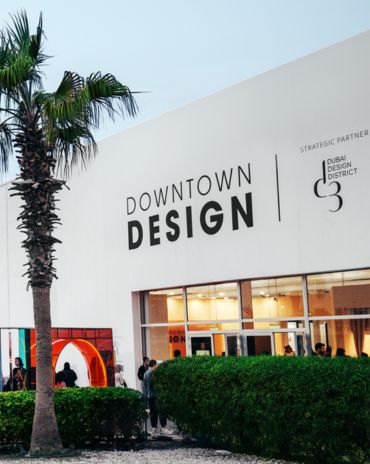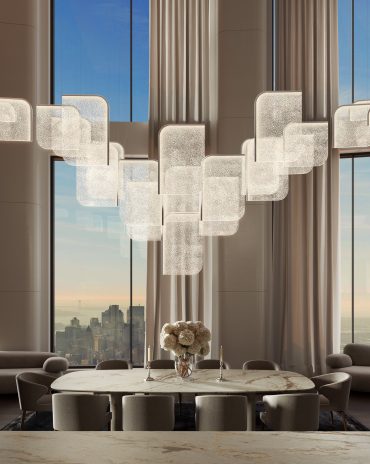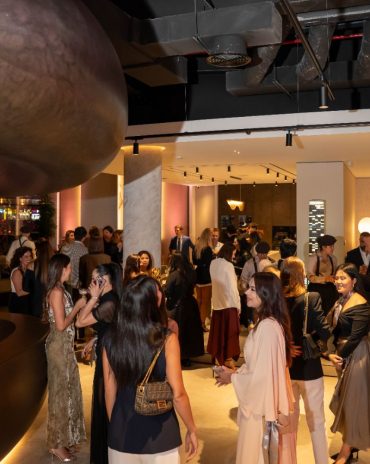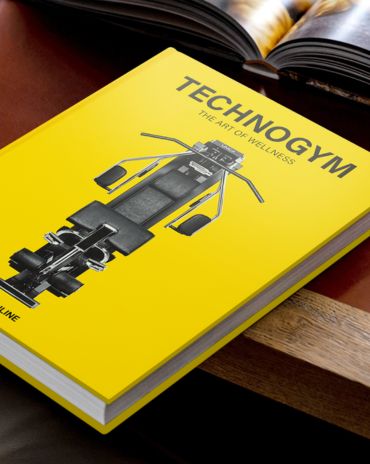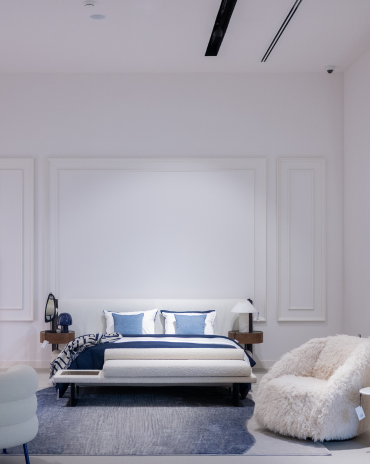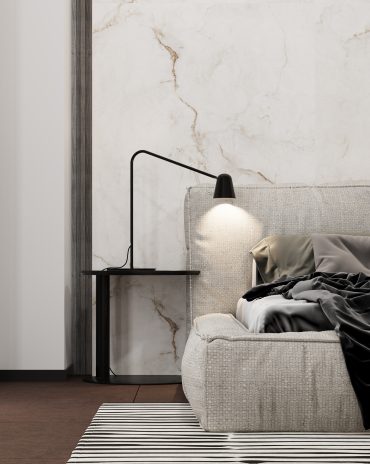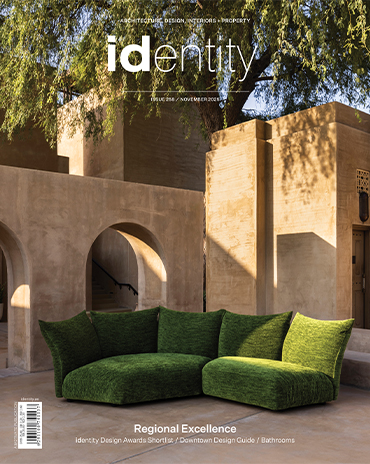Copyright © 2025 Motivate Media Group. All rights reserved.
Kiki Goti’s ‘Neo-Vanity’ collection merges traditional hand-painted motifs and rough sanded aluminium
The collection was showcased during Alcova Design Week in Milan
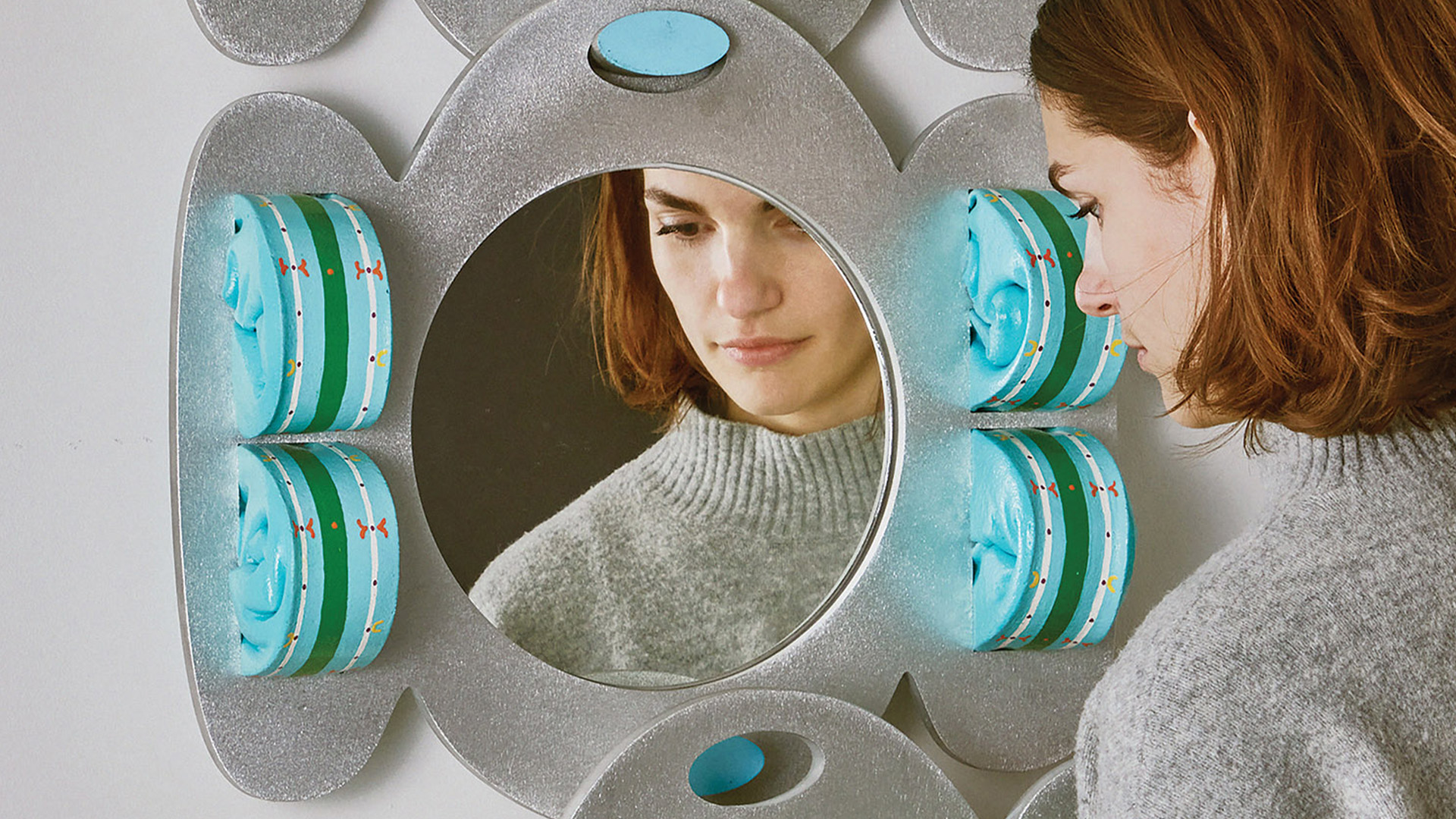
For Kiki Goti, a Greek architect, designer and founder of design studio SomePeople, the dressing room is a space for rituals and transformation. While it is often cited as a private area (and a luxury of sorts) reserved mostly for women to celebrate beauty, autonomy and eroticism, Goti’s ‘Neo-Vanity’ collection aims to offer another perspective through a series of objects which together express exuberance and a ‘neo-futuristic’ environment for all who enjoy the process of ‘getting ready’ as much as the main event itself.

To be showcased for the first time at Alcova Milano during Milan Design Week, the collection investigates a new, playful design language that balances utility with femininity, and comprises a pendant light, side table, two sconces and a standing vanity. “The ‘Neo-Vanity’ collection is about bold self-expression via ornamentation, culture and heritage,” Goti explains. “I am re-imagining a dressing room as a transitional space where we reinvent and transform ourselves by embracing our past experiences, namely where we come from, [while] simultaneously looking toward new ways of portraying ourselves.
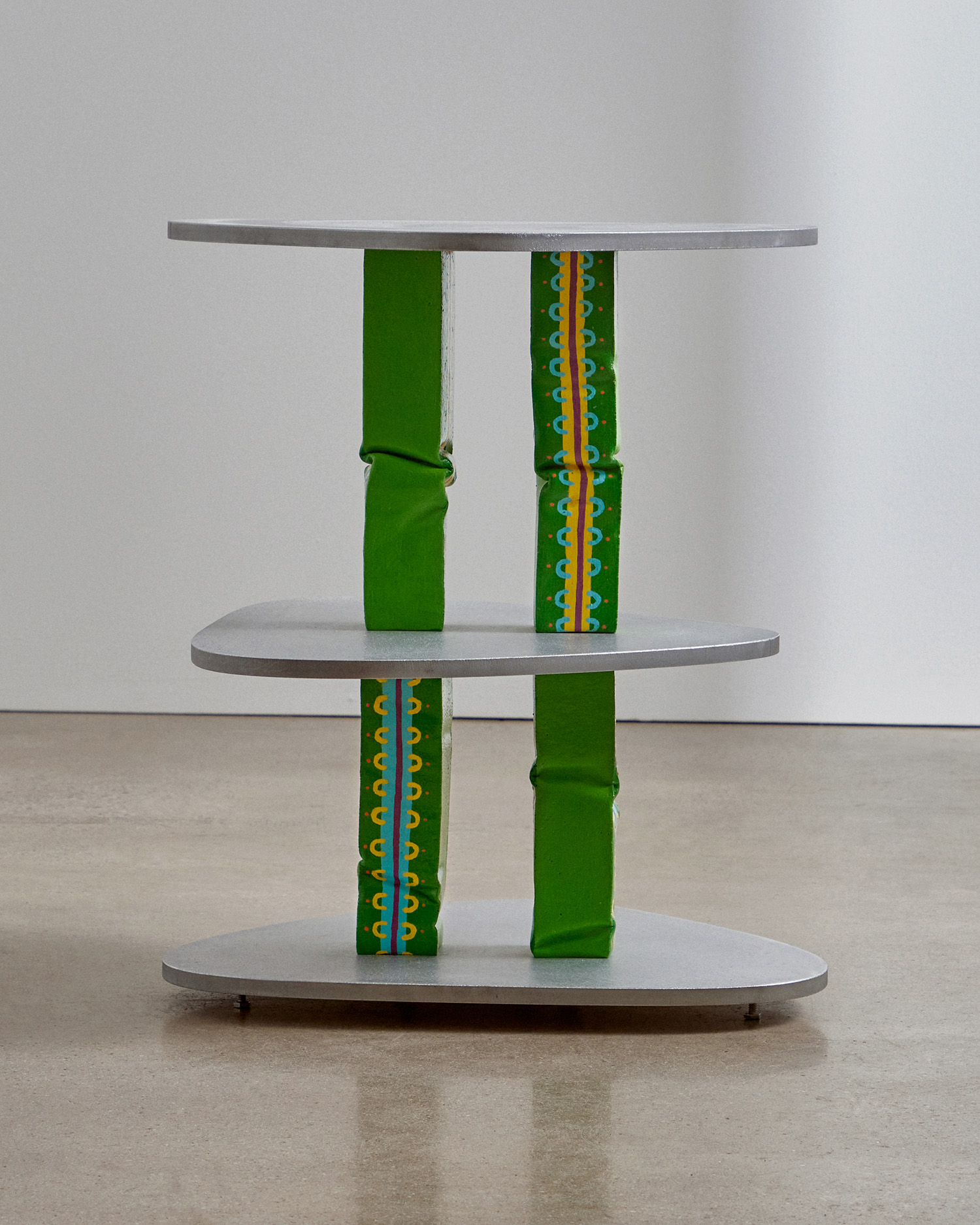
“This thought process within itself is represented through the contrasting materials. They emphasise the merging of future and past that happens during personal transformation,” she adds.
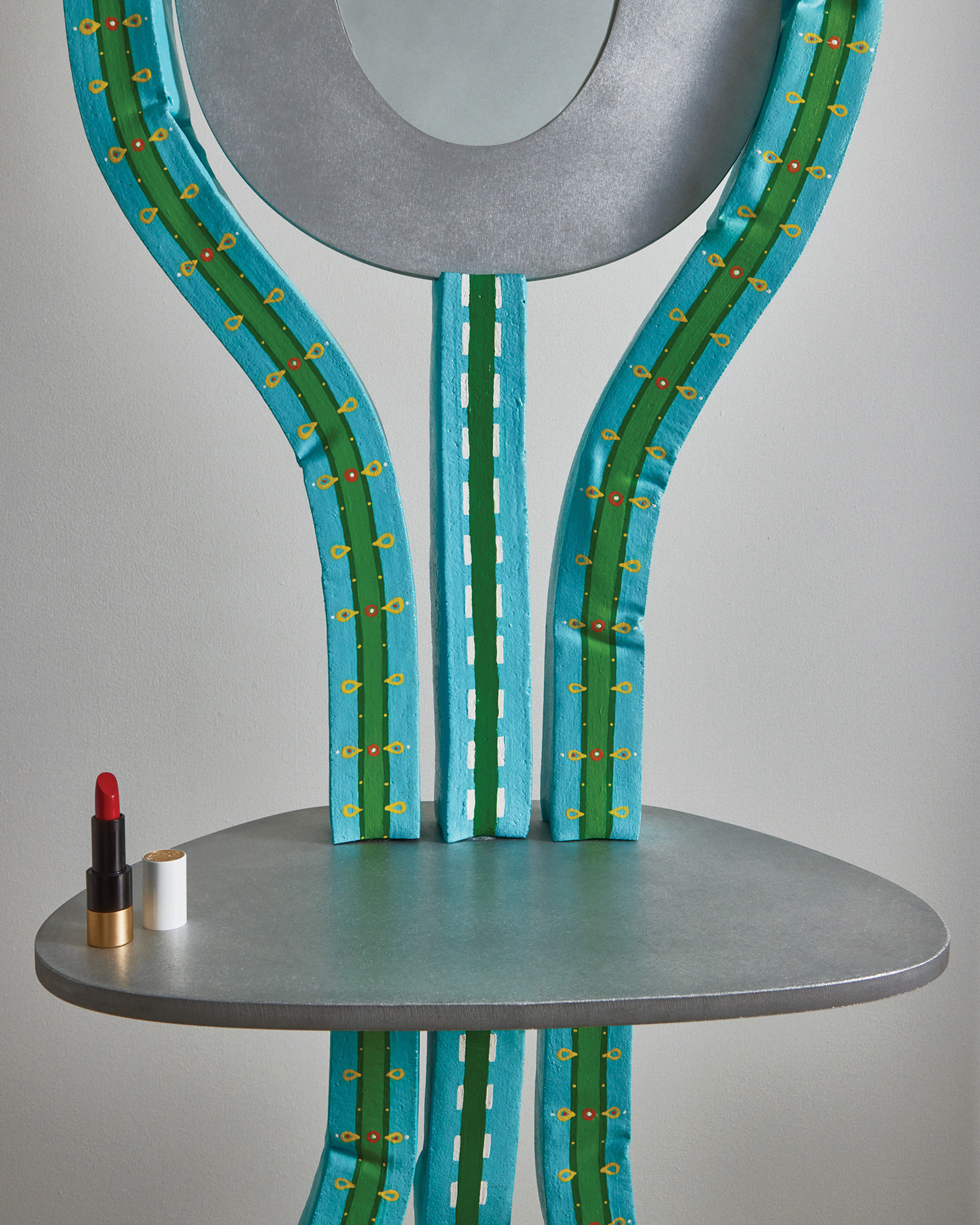
Fabricated in New York – where Goti is based – the aluminium forms were crafted by metal worker Mark Malecki, while the designer’s signature hand-painted foam pieces were used to dress the material. Inspired by the way identity can be expressed though traditional costumes, the hand-painted patterns reference Balkan motifs, derived from folkloric textiles, as a celebration of Goti’s Greek heritage.
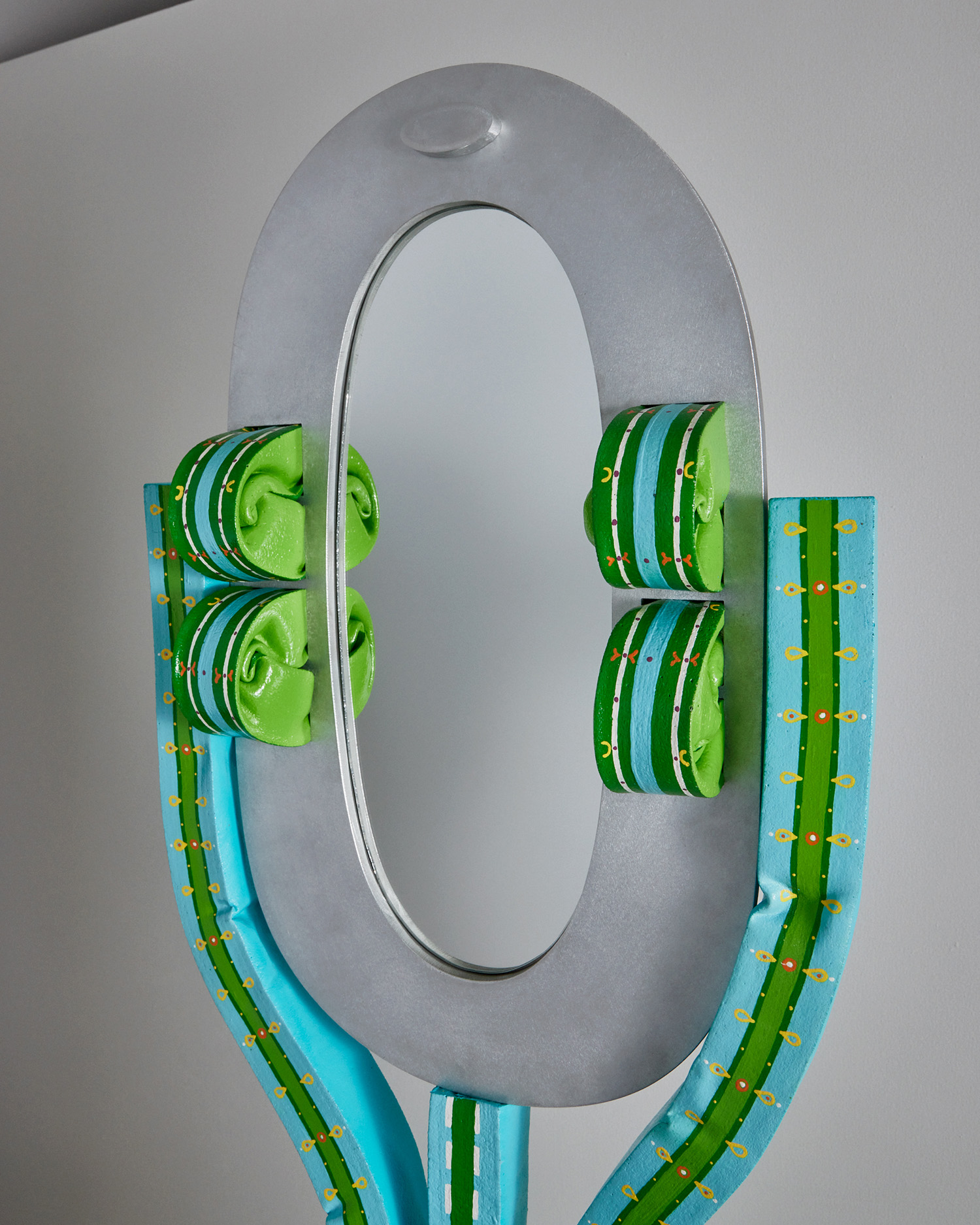
“The colours and patterns of this collection refer to the traditional textile techniques of the Balkan region, such as stitching, weaving and lacing,” says Goti. “The details on each piece reveal how ornamentation, embellishment and beautification can act as a tool for personal and communal empowerment. Although ornaments have been heavily criticised as redundant, unnecessary and distracting, they traditionally manifest deep cultural bonds and individual expressions.”

The craft process is also central to Goti’s work, she says: “Craft is essential. It’s how I arrive at the finished work. My process is very intuitive. It’s not about a mastery of craft or perfection; it’s more about the unexpected findings and material experimentation.
“My design process is more bottom-up than top-down. I don’t come up with a concept or a design and then fabricate it. I spend a lot of time testing and experimenting with materials in my studio. The ideas and the designs emerge thereafter.”
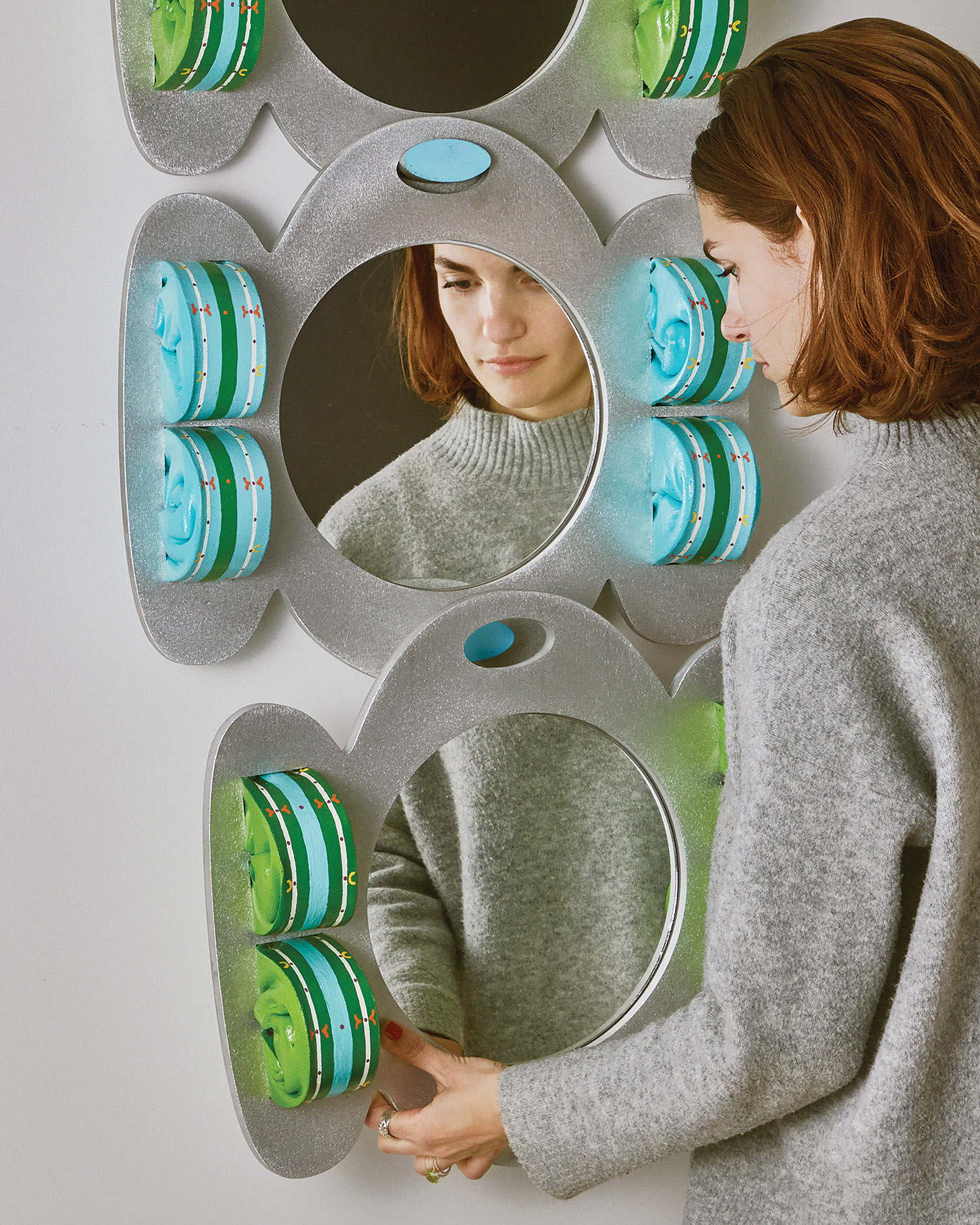
Describing her work as ‘neo-folklore’ and ‘pop vernacular’, Goti says her aim is for the collection to eventually become customisable. “Dressing rooms are very personal,” she describes. “I would want the painted motifs on foam to personally speak to each user.”
Photography by Chelsie Craig
The Latest
Dubai Design Week 2025 Unfolds: A Living Celebration of Design, Culture, and Collaboration
The 11th edition of the region’s leading design festival unfolds at Dubai Design District (d3)
Preciosa Lighting Unveils ‘Drifting Lights’ at Downtown Design 2025
The brand debuts its newest 'Signature Design' that explores light suspended in motion
IF Hub Opens in Umm Suqeim
A New Destination for Design and Collaboration in Dubai
The Language of Weave
Nodo Italia at Casamia brings poetry to life
The Art of the Outdoors
The Edra Standard Outdoor sofa redefines outdoor living through design that feels, connects and endures
The Art of Wellness
Technogym collaborates with Assouline to release a book that celebrates the brand’s 30-year contribution to the fitness industry
The Destination for Inspired Living – Modora Home
Five reasons why you need to visit the latest homegrown addition to the UAE’s interiors landscape
Elemental Balance — A Story Told Through Surfaces
This year at Downtown Design 2025, ClayArk invites visitors to step into a world where design finds its rhythm in nature’s quiet harmony.
The identity Insider’s Guide to Downtown Design 2025
With the fair around the corner, here’s an exciting guide for the debuts and exhibits that you shouldn’t miss
A Striking Entrance
The Oikos Synua door with its backlit onyx finish makes a great impression at this home in Kuwait.
Marvel T – The latest launch by Atlas Concorde
Atlas Concorde launches Marvel T, a new interpretation of travertine in collaboration with HBA.
Read ‘Regional Excellence’ – Note from the editor
Read the magazine on issuu or grab it off newsstands now.





